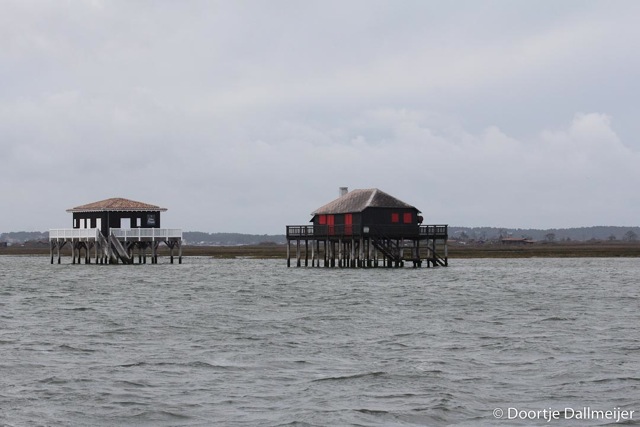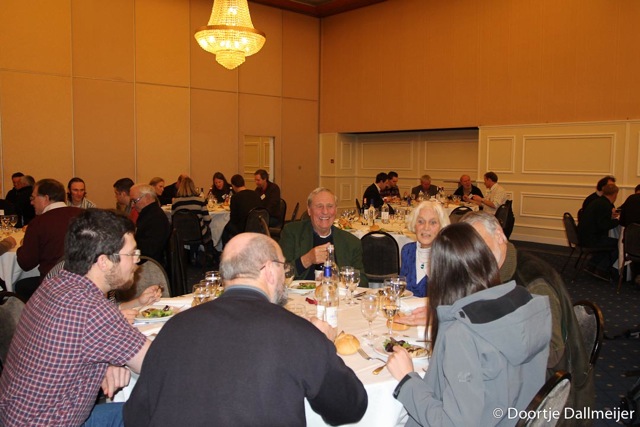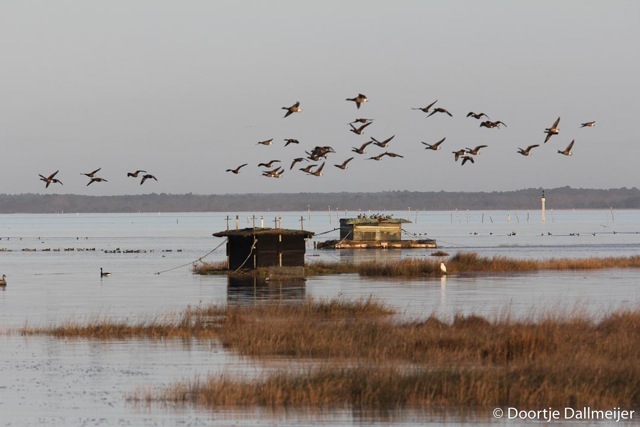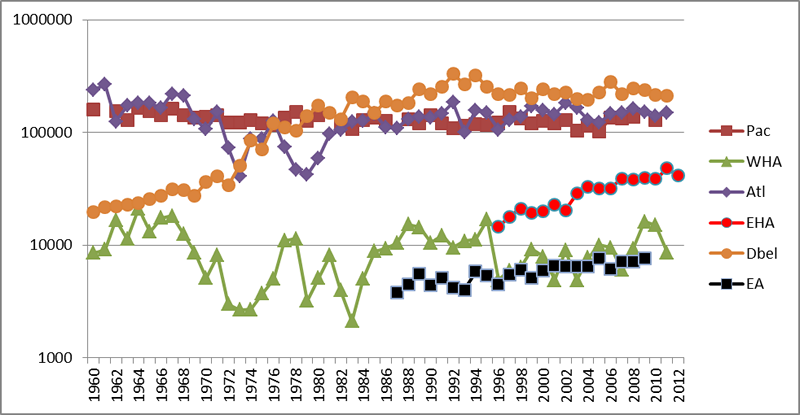The15th meeting of the Goose Specialist Group was held in the Palace of Congress of Arcachon, France, from 8-11 January 2013. back to meetings
 |
| Group picture participants of the 15th meeting of the GSG in Arcachon. Photo courtesy of Gilles Leray |
The meeting was held in the Palace of Congress , next to the Bassin d’ Arcachon where several tens of thousands of Brent geese (Branta b.bernicla) winter every year.
 |
| High tide in the Bassin d'Arcachon. |
The meeting has received financial sponsorship from Office National de la Chasse et de la Faune Sauvage (ONCFS), Oiseaux Migrateurs du Paléarctique Occidental (OMPO), Fédération Nationale des Chasseurs (FNC), Fédération départementale des Chasseurs de Gironde (FDC33), Maison de la Chasse, Mairie d’Arcachon, Conseil Régional d’Aquitaine, Conseil Général de Gironde and la Fédération des Associations de Chasse et conservation de la faune sauvage de l’UE (FACE). All these organizations are kindly thanked for their generous support.
In addition, 8 participants received a financial grant to attend the meeting from the Dutch Faunafund, OMPO and ONCFS - without this support these participants would not have been able to attend.
The idea to have this meeting in France arose during the 13th meeting of the GSG in Elista, Russia in March 2011, and planning for this current meeting in Arcachon began just after the 14th meeting of GSG in Norway in April 2012.
The board of the Goose Specialist Group (consisting of Bart Ebbinge - chair, Tony Fox, Thomas Heinicke, Konstantin Litvin, Jesper Madsen, Johan Mooij, Ingunn Tombre, Berend Voslamber) has been closely involved in the preparation of this meeting.
A committee was established to organize all practical aspects of the meeting (including from ONCFS Pierre Migot, Guillaume Rousset, Jean-Marie Boutin, David Gaillardon, Brigitte Bonnemains, Hélène Melkebeke, Isabelle Rivault, Thierry Thomas, Anne Floch and Valérie Guérineau, and from the Palace of Congress, Virginie Dochez)
A further committee was established to plan the scientific contents of the programme which consisted of Bart Ebbinge, Kendrew Colhoun, David Ward and Vincent Schricke.
 |
| Dinner during the 15th meeting of the GSG in Arcachon. Photo courtesy of Doortje Dallmeijer |
The meeting was attended by 66 participants from 17 different countries. Delegates came from Belgium (2), Canada (2), Denmark (1), France (18), Germany (4), Greece (1), Iceland (1), India (1), Ireland (3), Mexico (1), Netherlands (17), Norway (1), Poland (1), Russia (6), Sweden (2), UK (4) and the USA (1).
 |
| Brent Geese in the Bassin d'Arcachon. |
The focus of the meeting was on three species of the genus Branta, viz. Branta bernicla, Branta leucopsis and Branta ruficollis. The full programme and abstract book consisted of 12 posters and 46 oral presentations. There were no less than 36 presentations about Brent or Brant (Branta bernicla) covering population development, importance of eelgrass (Zostera), genetics, migration, and 5 about the fascinating increase and range expansion of Barnacle Geese (Branta leucopsis) and 2 about Red-breasted Geese (Branta ruficollis). On top of this 1 presentation dealt with Greater White-fronted Geese (Anser albifrons), 3 with Lesser White-fronted Geese (Anser erythropus), 5 with Greylag Geese (Anser anser), 1 with Mute Swans (Cygnus olor) and 5 covered more general aspects like the impact of land use change in Russia, disease and hybridization.
During the conference the following overview of the changes in population size of all Brent/Brant Goose populations was drawn together by David Ward, Kevin Clausen, Kerry Mackie, Kathy Dickson and Bart Ebbinge
 |
| Trends in population size on a log scale from 1960-2012 of all six Brent/Brant populations world-wide, Pac = population of Pacific Black Brant (Branta b. nigricans) including small numbers that winter in East Asia that winters on the West Coast of North America, WHA = population of Western High Arctic Light-bellied Brant, also known as Grey-bellied Brant (Branta b. hrota) that winters on the West Coast of North America, Atl= population of Atlantic Brant (Branta b. hrota), that winters on the East Coast of North America, EHA= population of Eastern High Arctic Brent (Branta b. hrota), that winters mainly in Ireland, Dbel = population of Dark-bellied Brent Geese (Branta b. bernicla), that winters in western Europe, and EA = population of East Atlantic Light-bellied Brent (Branta b. hrota), that breeds on Svalbard and NE-Greenland and winters in Denmark and NE-Britain. |
Proceedings to be published in Wildfowl.
The proceedings from this meeting will appear as a special issue of the British peer-reviewed journal Wildfowl, due in December 2013.